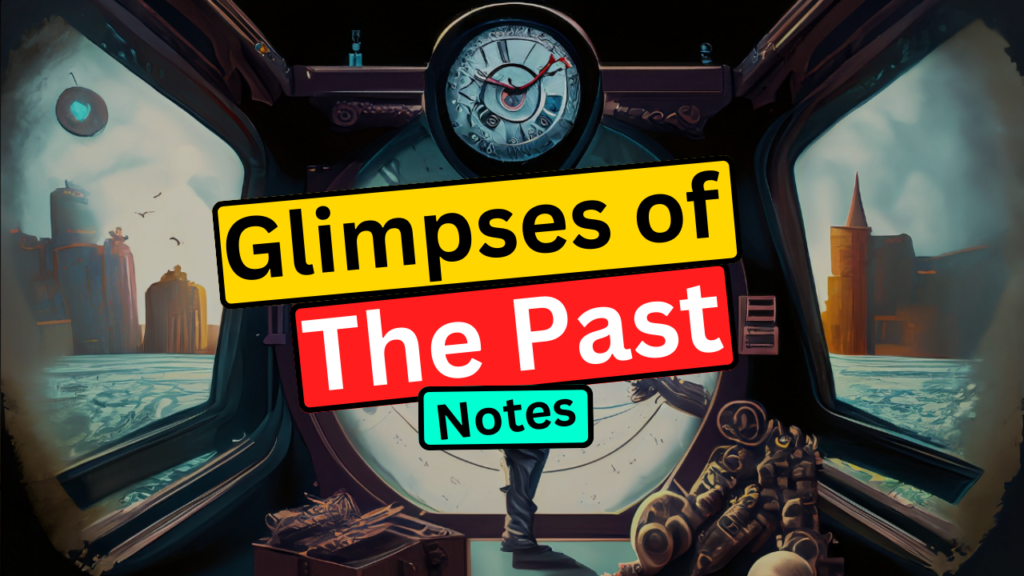Summary of Glimpses of the Past
The chapter recounts the events and conditions that occurred in India from 1757 to 1857. It all begins with the East India Company’s dominance in India. The Indian rulers and states were at odds with one another. They frequently requested British assistance, and the British used this to build power and establish their authority in India. The social situation was likewise in disarray. Child marriages, untouchability, sati pratha, and other social ills were rampant. Farmers also had to pay a lot of taxes.
Raja Ram Mohan Roy put forth a lot of effort to transform society. The British also issued many resolutions aimed at destroying India and Indian enterprises. Lord Macaulay also introduced legislation mandating that English be the exclusive medium of instruction.
The British’s major goal was to train clerks to help them with administration. By 1856, India had become a fully fledged British colony. But, with the 1857 rebellion, British control began to tremble. Indians rebelled and fought for independence till 1947, when they finally gained it.
Glimpses of the Past Summary in English
The main purpose of the British was to train clerks to assist them with administration. India had become a full-fledged British colony by 1856. During the 1857 uprising, however, British rule began to shake. Indians revolted and battled for independence until 1947, when they were granted it.
They lacked cohesion. They also frequently requested British assistance, which the East India Company took full advantage of. The Brits used the ‘Divide and Rule’ method to conquer the Princes. Some individuals supported the British, while others did not. Tipu Sultan of Mysore, on the other hand, fought alongside the British. Unfortunately, he perished during the Fourth Anglo-Mysore War in 1799.
The chapter goes on to explore the social fabric from 1765 to 1836 in greater detail. Religious leaders taught evil social practises like as untouchability, child marriages, Sati pratha, and so on. The Brits despised the Indians, and as a result, the Indians lost their self-respect.
Farmers were heavily taxed by the Brits. They even chopped the professional artists’ thumbs. Imports from England, on the other hand, were tax-free. Hence, the major goal of the Brits was to maximise profit and riches.
Raja Ram Mohan Roy began his attempts to improve Indian society between 1772 and 1833. He founded the Brahmo Samaj for this aim. He spread the notion that the fundamental teachings and principles of all faiths are the same. He also founded newspapers in India. He was opposed to bad traditions including Sati pratha, polygamy, child marriages, and the caste system. He was instrumental in the abolition of Sati pratha.
The Brits approved The Third Regulation Act in 1818. It states that an Indian can be imprisoned even without a judicial trial. This was a period of Indian persecution. British exports were valued seven crore rupees by 1829. As Indian businesses were collapsing, the British were thriving.
As if this wasn’t enough, the British decided to train clerks to administer the administration. Consequently, in 1835, Lord Macaulay proposed that English be used as the medium of instruction. This education scheme also produced thinkers who saw the faults of the British Raj and educated their fellow Indians.
India had become a completely administered British colony by 1856. As the crackdown reached its apex, revolts erupted. The Santhals rebelled against the British and slaughtered their servants in 1855.
The first Sepoy Mutiny began in 1857 with the execution of Mangal Pandey. The sepoys marched towards Delhi, screaming pro-Bahadur Shah Zafar chants. This campaign was also supported by landlords. They distributed chapattis with the message that their local king requires their assistance. A lotus blossom was also presented to the Indian soldiers.
Numerous monarchs joined the insurrection, including Hazrat Mahal of Lucknow, Maulvi Ahmadullah of Faizabad, Tatya Tope and Peshwa Nana Saheb of the Maratha empire, and Kunwar Singh of Bihar. This marked the start of the Indian liberation fight.
Conclusion of Glimpses of the Past
‘Together we stand, divided we fall,’ says this chapter. It also teaches us that we must be organised in order to be successful in everything we do.





